Close reading (in the Common Core) requires students to consider text (in it’s different forms) through three lenses: what does it say, how does it say it, and what does it mean to me? Summarizing is an essential skill for learning, but too often in school we simply ask students to “guess” what the teacher (or author) thinks is important.
An essential part of a summary is that it needs to be expressed to an audience. In life, we purposefully craft summaries for a specific audience (directions for the out-of-towner, computer how-to for the technophobe). In school, the tacit audience for most summaries is the teacher. Imagine how a student feels when asked to summarize a textbook passage for the teacher. In effect they have been asked to summarize one expert’s writing for delivery to another expert – the teacher. “…and remember, be sure to use your own words!”
If students are going to learn to summarize they need to be given a chance to genuinely share what they think is important for an audience other than the teacher. Here’s a three step process I followed in a second grade classroom using a popular Currier and Ives print, “Westward the Course of Empire Takes Its Way.” (1868) Link to larger image

Step 1: Start with the concrete “right there” observations.
I projected a digital image on the screen and asked student to talk about the people, things and activities they could identify. They replied, a train, native Americans, a village, people digging, steam from the train, houses, trees, a lake, maybe a harbor, a road, dry grass, covered wagons, poles, mountains, a school house, people working, people waiting for the train, a train track, etc ….
Step 2: Give students a chance to tell what they think is important.
I managed this aspect by asking each student to draw a picture of what they saw in the projected image. The details they included were what they thought was important. Here’s a few samples. Click to enlarge.
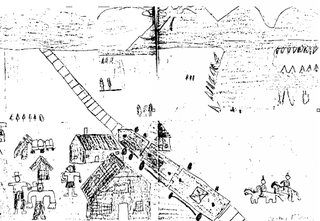
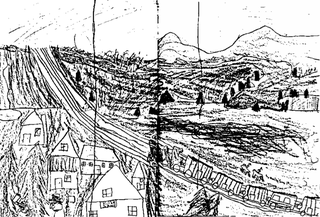
Step 3: Give students a chance to frame their summary into a narrative explanation for another audience.
I digitally divided the image into multiple sections and photocopied them (in B &W) into packets of image details. I gave groups of students the packets and asked them to work in teams to assemble the images into children’s “a story book” with a caption under each image.
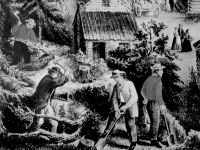
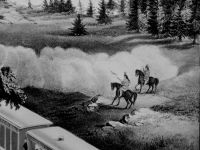
Here are some of their captions: (spelling corrected)
- Water would come from the mountain and fill the lake. You could get fish and drink water. Water is very important
- People were moving west. They moved by wagon at first, then but train, which is faster.
- Life was tough. People had to do everything for themselves.
- It maybe was lonely because people missed their friends back home.
- The people were building a town. They could get wood from the trees. It was a small town at first.
- The Indian see the people coming. They knew things were changing. They got sick from the smoke.
- The school was different from our school. People had different clothes than us.
- The train split the old life from the new life.
While summarizing has been shown to be one of the most effective strategies for building content knowledge, that gain only applies when students are allowed to make their own judgements about what’s important and frame their summaries for an audience. When we ask them to “learn” the teacher’s summary – they are reduced to memorizing “another fact.”
When we ask our students to create authentic summaries (with audience and purpose) we give students a chance to reflect on their learning. Instead of simply testing them for factual knowledge, students can be asked:
- What did I think was important?
- How did I share that with my audience?
- Did my summary match audience and purpose?
- Is my summary accurate?
- Did I use my own words and style?
- What did I learn from the activity?
For more learning strategies see my blog post: 18 Literacy Strategies for Struggling Readers – Defining, Summarizing and Comparing
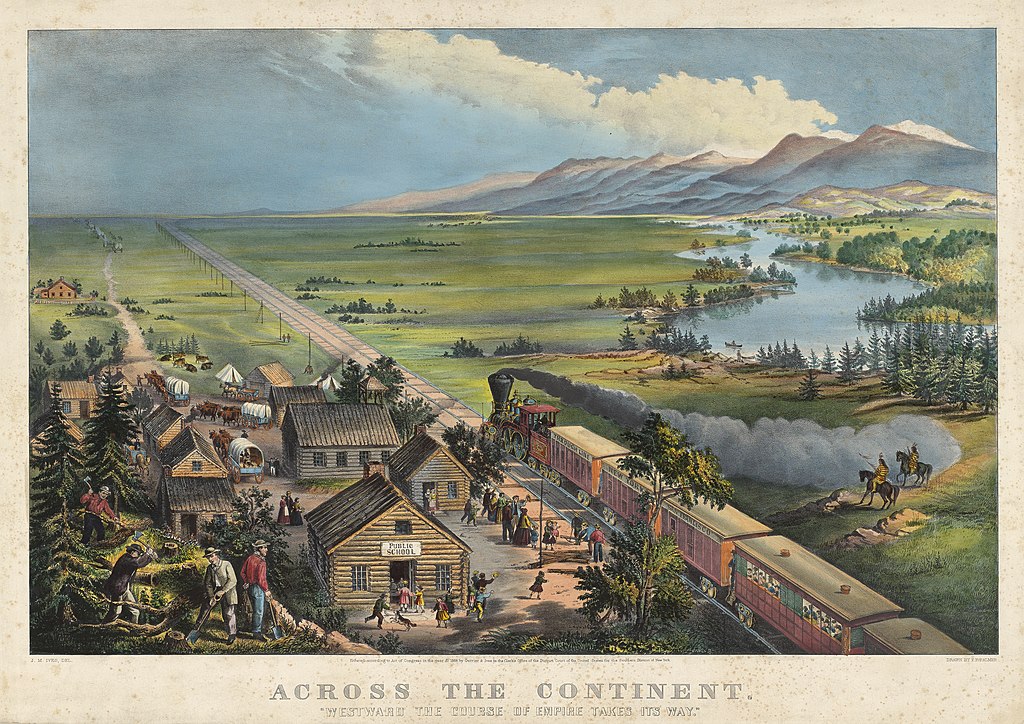

Fantastic post!
Perfect for an art appreciation class presentation. Love how though the artwork other learning concepts are explored.
Anna
http://www.ideasplash.org
http://artvolunteerintheclassroom.blogspot.com
Anna,
Glad you like the lesson and see its value for use in art class.
Cheers,
Peter
I was attracted to your article as an English teacher. Recently I had a discussion about summarizing and teaching summarizing systematically (as applied to writing). The model of deconstructing a passage written in the style of the Queen’s English is rarely appropriate anymore. More often than not the articles that the students are reading, often online, are written in a news format with frequent paragraphing, sometimes just one idea in a one sentence paragraph. Under such circumstances, it’s more complicated to determine what’s important.
I really like this activity you’ve presented with the use of images. I appreciate the ‘play by play’ and I plan to use this as a starting point for teaching text summarizing to grade nine students who are under grade level in their reading/writing.
Thanks
Kimberly,
I’m glad you found the post useful. Nice to see you re-craft it for your HS students. Best of luck with that.
Summarizing can be a lower-order, teacher centered activity. Typically in that situation, the job of the student is to give the teacher back something that the teacher already knows – a “right there” bit of information.
Summarizing rises to higher-ordered, student centered when the student is actually invited to decide what’s important to them and is asked to craft it for a audience other than the teacher. Of course in that situation, you get many different summaries.
The same approach can be used to help students develop sequencing skills. See this post: Why Don’t We Teach Sequencing Skills? It’s an Essential Higher-Order Thinking Strategy
You might also find some useful material at this post 18 Literacy Strategies for Struggling Readers – Defining, Summarizing and Comparing
Just speaking with a colleague today about strategies for teaching HS students to summarize. This strategy is excellent–I’ll be passing it on.
What I like best is that it encourages students “to make their own judgements about what’s important.”
Thank you.
Steve,
Glad you like the lesson. BTW – I think letting students make “their own judgements about what’s important” is the key to most successful strategies.
I was linked to this site from another site. It’s years later, but your suggestion still remains a great one. I look forward to using it in the future. Thanks
Hi Sandy,
Glad you find it useful. Hopefully good ideas never go out of style.
~Peter
I truly appreciate the step by step approach and the acknowledgement that all students will come away with their own perspective on what is truly important when crafting summaries. I only wish this was acknowledged on our assessment rubrics. Thank you for the idea!
You’re so right about the assessment rubrics. So much conspires against good teaching.
i am really glad to read and know how to teach summarizing in a fun way and not the usual way of how we do it. Thanks a lot.
Xylene, Good to hear.
Cheers, Peter
Hey Peter, I love the fact that you pointed out “that gain only applies when students are allowed to make their own judgements.”
If students aren’t allowed to think and come to conclusions by themselves, it can end up stymieing their creativity. At that point, they’re only trying to come up with what has been presented to them as “the right answer”, even though there might not actually be one.
Alex,
Thanks for your insights.
Agreed. Why should students have to guess what the teacher thinks is important?
Cheers,
Peter
Do you have a website suggestion for more paintings? My students did well with this and I would like to continue to practice on other paintings. I am struggling finding ones that fit well with the lesson though.
Here links to some of my favorite image resource sites in American History and in World History.